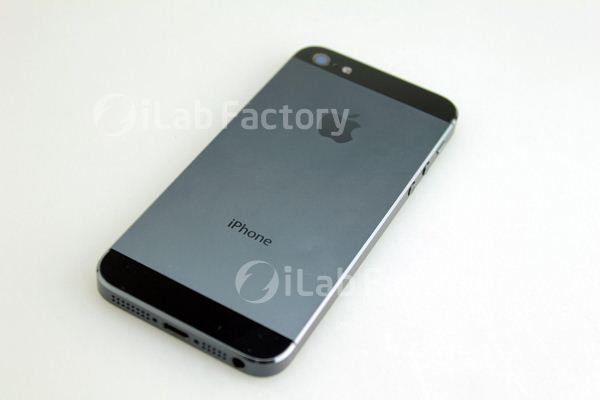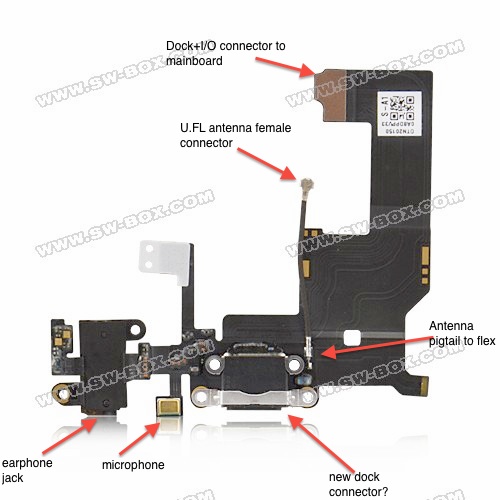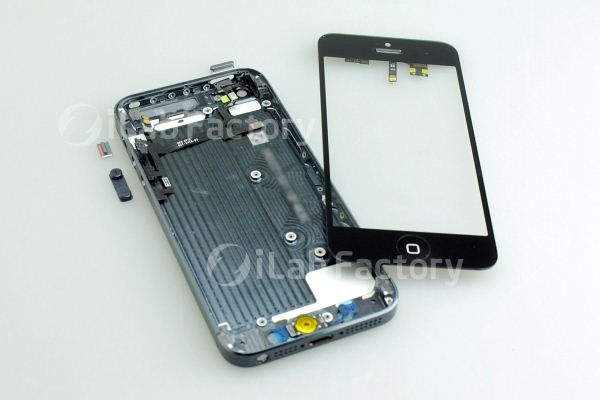Preparing for the iPhone Next: Rumors Analyzed
by Brian Klug & Anand Lal Shimpi on August 27, 2012 9:40 PM EST- Posted in
- Smartphones
- Apple
- Mobile
- iPhone
While we typically don't comment on rumors we don't know to be true at AnandTech, we often get requests to help set rational expectations ahead of major iDevice launches. The shroud of secrecy around major Apple launches can pave the way for both sensible and unrealistic conclusions.
Given the growth of Apple's iPhone/iPad devices, it has become increasingly difficult for suppliers in the chain to remain mum about any changes. Similar to how we often get early access to CPUs, motherboards and other components out of Taiwan, it has become increasingly commonplace to see leaks of iDevice components out of the big ODMs in China.
Apple is largely expected to launch its sixth iPhone next month. The historical cadence of design, SoC, and cellular changes are in the table below:
| Apple iPhone - Historical Trends | |||||||
| Release Year | Industrial Design | CPU Architecture | GPU Architecture | Cellular Architecture | |||
| iPhone | 2007 | 1st gen | ARM11 | MBX-lite | Infineon S-Gold 2 | ||
| iPhone 3G | 2008 | 2nd gen | ARM11 | MBX-lite | Infineon X-Gold 608 | ||
| iPhone 3GS | 2009 | 2nd gen | Cortex A8 | SGX-535 | Infineon X-Gold 608 | ||
| iPhone 4 | 2010 | 3rd gen | Cortex A8 | SGX-535 | Infineon X-Gold 618 in 4 GSM / Qualcomm MDM6600 in 4 CDMA | ||
| iPhone 4S | 2011 | 3rd gen | 2 x Cortex A9 | SGX-543MP2 | Qualcomm MDM6610 (MDM6600 w/ ext. trans) | ||
| iPhone Next | 2012 | ? | ? | ? | ? | ||
Trends are pretty easy to spot in the table. With the exception of the first iPhone, the industrial design appears to be on a 2-year cadence. The CPU and GPU architectures are also on the same 2-year cadence. From a silicon standpoint even the cellular architecture is trending towards the same 2-year cadence, with a few notable exceptions (e.g. GSM/CDMA iPhone 4 divide).
Based on historical trends alone it's pretty easy to conclude that we'll see a 4th generation chassis, a pair of ARM Cortex A9s and a PowerVR SGX 543MP2 under the hood. Add the assumption of LTE (a reasonable one to make) and you have a pretty believable story. It turns out the currently available evidence helps corroborate this, but let's dig through what's out there to see how this all fits.
Chassis & Display
The chassis is largely a known quantity by this point. Enough examples out of China have surfaced to support the current working theory of a 4-inch diagonal (16:9) display in a slightly taller chassis with roughly the same width. Put simply, it's a new taller aspect ratio, which also has the consequence of including a larger 4-inch, 640 x 1136 display. The result is a change only in one dimension for developers to worry about.
The other big rumored change is a move from on-cell touch sensing (which places the drive and detect ITO layers above the LCD assembly) to an in-cell touch solution. In-cell being the operative word because the drive layers are integrated into the LCD gating (or use it natively), or on the color filter layer. There's some debate about what counts as on-cell and in-cell that isn't quite settled, but ultimately what it boils down to is a thinner display stack that will contribute significantly to the reduction in overall device thickness that is rumored for the upcoming iPhone.
While the industrial design remains quite similar at a high level, there do appear to be some major changes. Where the 4 and 4S designs used front and back glass with an external metal band for support, the leaked designs out of China feature a metal unibody construction with cutouts for RF windows at top and bottom. There's enough evidence of this from the CNC machine marks visible on examples, and moreover moving to a larger form factor requires a beefier chassis.

Black regions at top and bottom are likely RF window cutouts
With top and bottom RF windows (which appear to be glass) there shouldn't be any implications on antenna performance for cellular. If you followed our coverage of the evolution of Apple's cellular antenna design from the iPhone 4 GSM, to 4 CDMA, to 4S, you'll notice that this is a clear next step, largely inheriting the top/bottom antenna split from the 4S which fully mitigated deathgrip. Interestingly enough the exterior band appears to have a different chrome finish rather than the matte stainless steel of previous designs.

Bottom flex cable, annotations ours
Other things like moving the 3.5mm headphone jack to the bottom of the device and the mini 9-pin dock connector are fairly well corroborated by leaks with components that all fit together inside the case. Interestingly enough, parts indicating the mini dock connector and relocated headphone jack have been circulating for nearly 4 months.











131 Comments
View All Comments
swb311 - Tuesday, August 28, 2012 - link
I can trust you guys to put together solid research with a realistic view for worthwhile reading. Anandtech is certainly the most reliable site on technology on the internet.FordGT550 - Tuesday, August 28, 2012 - link
Screen is too small!solarisking - Tuesday, August 28, 2012 - link
Will this device be capable of supporting VoLTE when enabled by the network?Or would that require a new or different chip?
I'm especially interested in improved voice quality that HD Voice would bring.
name99 - Tuesday, August 28, 2012 - link
Does anyone have an opinion on whether this will be the device that finally starts RF-MEMS filtering?There has been muttering about using RF-MEMS (with mechanical resonance filtering) for a few years now, and it seems like the tech should be close to ready, but I'm not yet aware of any commercialization.
The closest thing that exists is WiSpry's RF-MEMS (used in one low-volume Samsung phone that came out in early 2012), but that device seems to be basically a shrink of traditional capacitor+inductor+resistor, not based on mechanical resonance. So it's still subject to the problems of stray capacitance+inductance.
RF-MEMS, even if it costs quite a bit more, seems like a natural fit for Apple, more than any other company. In the first place it saves space, which we know Apple is obsessive about; in the second place it makes it rather easier to support a whole lot of different frequency bands (including the whole LTE band mess, and 5GHz WiFi) without the careful and painful tweaking that is necessary using traditional filters, where the inductances and capacitances from each filter spill over and mess up the nearby filters.
I could see this as a perfect Apple move. MEMS is sexy, so it makes a good "rah rah we are still at the forefront of tech innovation in phones" item for the announcement speech; it also allows the phone to more of an LTE world-phone, and if Apple has a one or two year exclusive on whoever supplies them the RF-MEMS, it makes it more difficult for someone else to ship an LTE world-phone.
FITCamaro - Tuesday, August 28, 2012 - link
http://www.youtube.com/watch?v=uIRBxRlsYR0woggs - Tuesday, August 28, 2012 - link
Just a quickly technical comment. NFC is only magnetically coupled, so isn't like a real antenna. A metal case, unless itself magnetic, won't block the magnetic field. But small size is still a limiter, so I'm not disputing the conclusion. I don't think the metal case is a limiter to NFC.worldbfree4me - Tuesday, August 28, 2012 - link
Will the new I Phone have a Barometer to assist the A-GPS for altitude awareness? Thanks in advance.debillin - Wednesday, August 29, 2012 - link
Anandtech, you are the gold standard of tech articles. I'm begging you, do not go down this road. You are above this. Apple rumors are incredibly over-reported. Leave these stories to lesser news sources.Sincerely, Annoyed longtime reader
olivdeso - Wednesday, August 29, 2012 - link
At first sight I thought this "NFC chip" was in fact a squared speaker, but now I am suspecting that it could be a pico projector...olivdeso - Wednesday, August 29, 2012 - link
or a laser 3D scanning device may be?